Portraits and magical symbols – all you need to know about Azerbaijani carpets
In the old days, they said that a carpet accompanied a person from birth to death in Azerbaijan, and this was no metaphor. In childhood, children played on carpets, carpets were given to girls as a dowry, people spent their entire lives around carpets, and even when a person died, their body was covered again with a carpet.
As recently as the beginning of the last century, Azerbaijani households had no chairs, armchairs, or sofas. There were carpets instead.
Styles of carpets
Azerbaijani carpets are divided into four categories, depending on their “birthplace” (also called schools):
Tabriz school – Although the city of Tabriz is now located in modern day Iran, it’s inhabited by ethnic Azerbaijanis. It was once the capital of the Turkic states that existed on the lands of Azerbaijan. Luxurious silk carpets were woven in Tabriz. Tabriz carpets are generally made with pastel colours, and richly decorated with floral ornaments.
Karabakh school – since rooms in Karabakh houses were roughly the size of a football field, the carpets for such rooms were woven in sets of five, in order to cover the entire floor. The main “features” of Karabakh carpets are their bright colors and floral ornaments. These carpets were also usually woven from wool.
Guba-Shirvan school – these carpets are more restrained and strict, there are no flower petals in their patterns, but medallions instead. These medallions are the calling-card of carpets from the Guba-Shirvan region. They can be placed in one row or more within the design.
Baku school – carpet weaving has been a much weaker tradition in Baku than in other regions. People in Baku generally didn’t weave carpets themselves, but bought them from other regions and traded them. That’s why there’s nothing to really boast about in this school. They do have their own unique characteristics though, simple geometric patterns and specific coloration with a predominance of ocher (a family of earth-tone pigments).
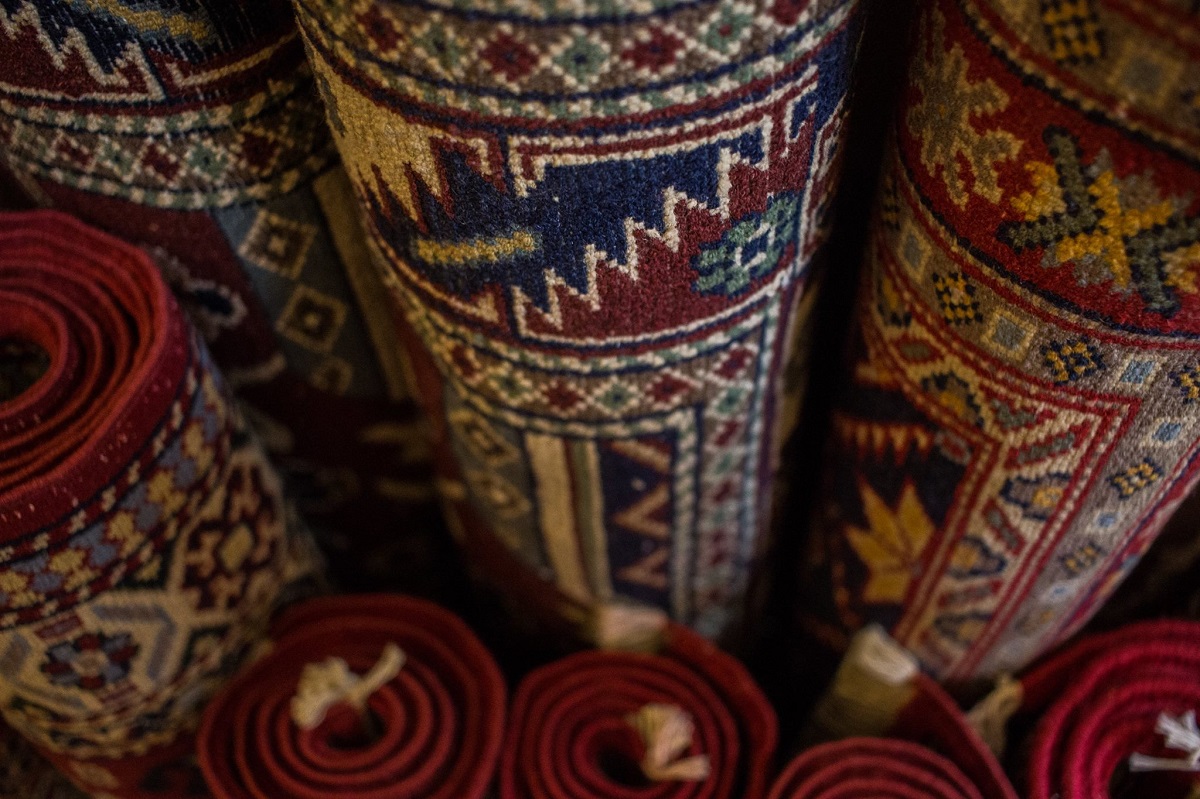
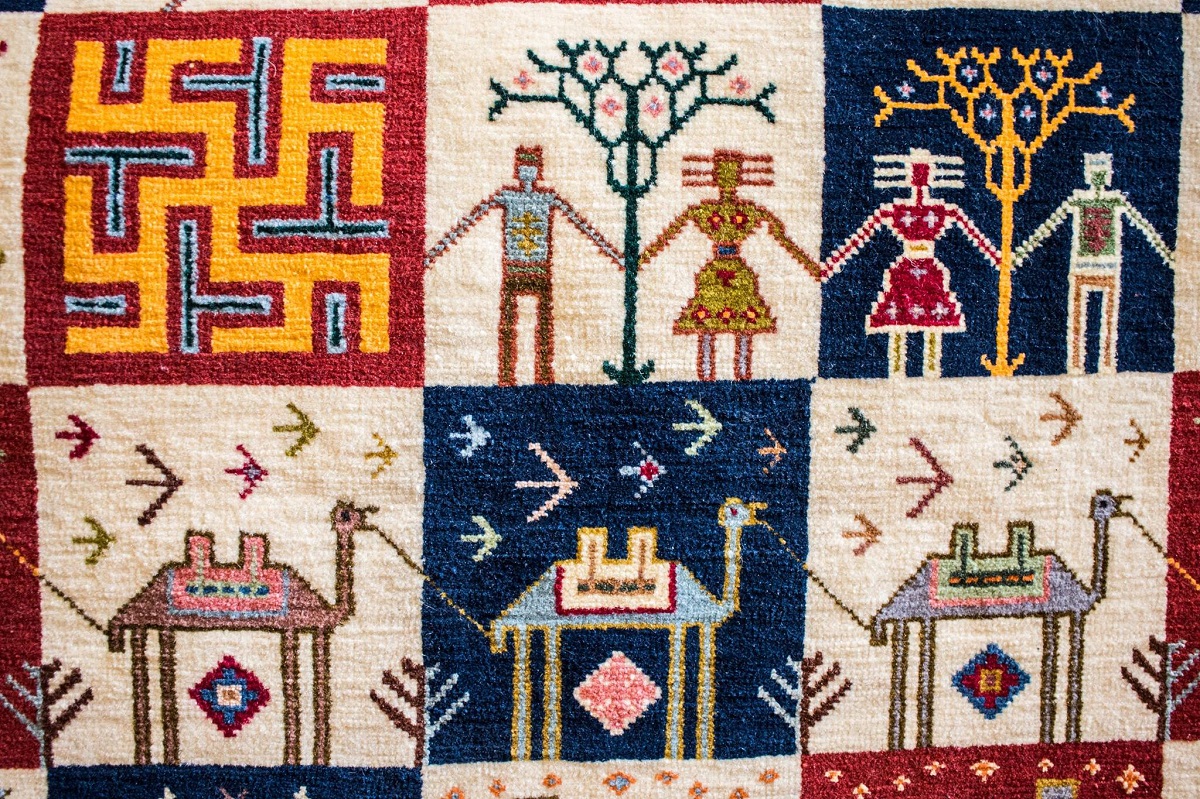
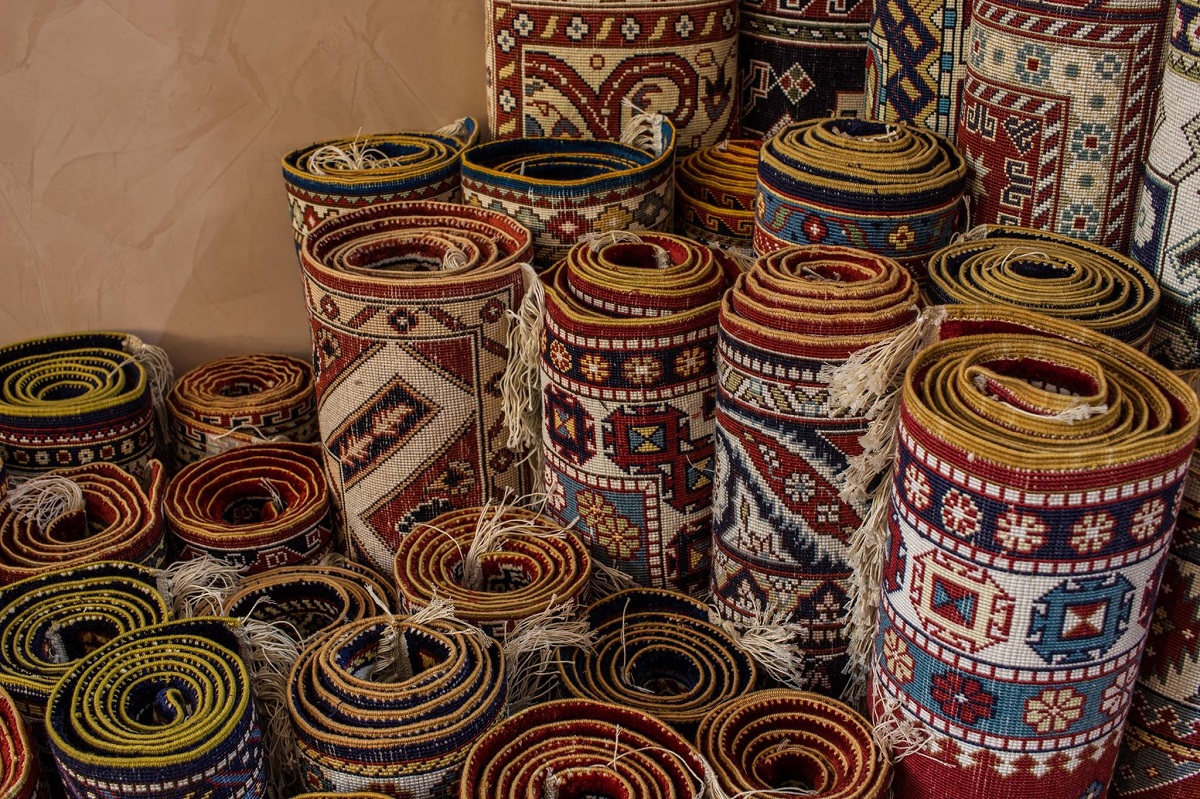


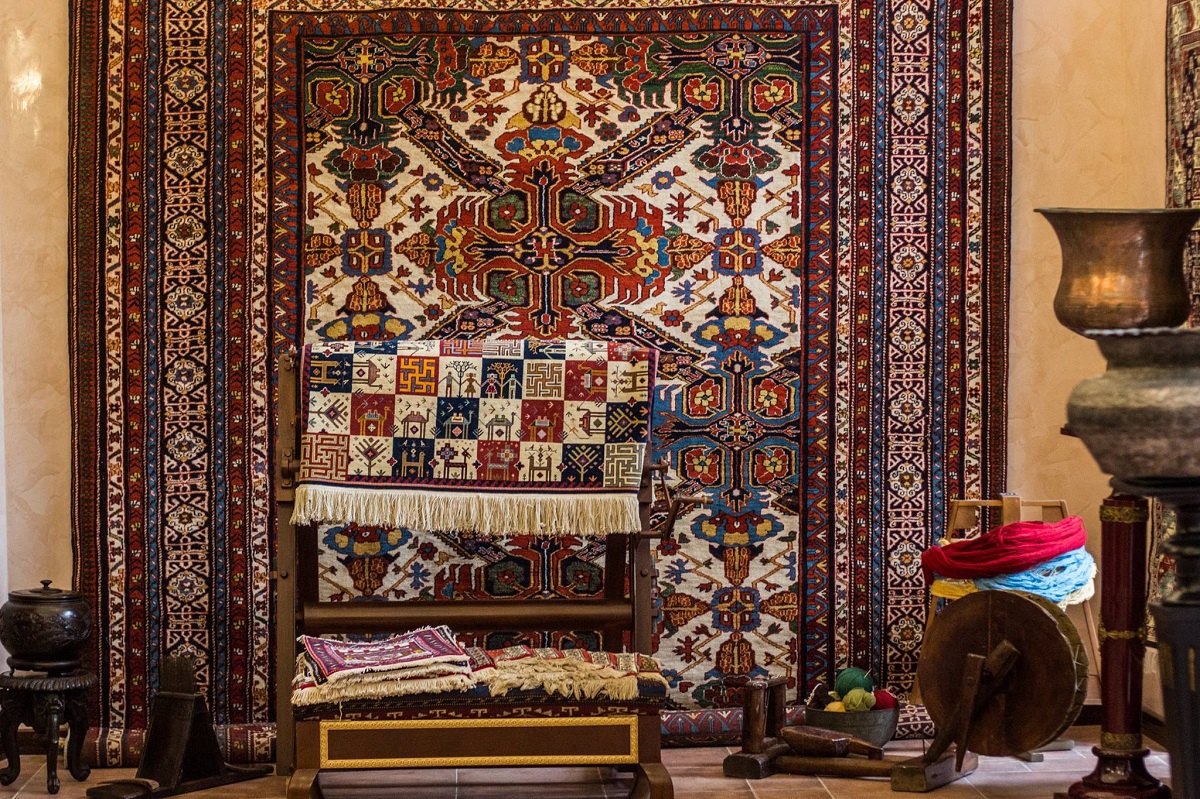
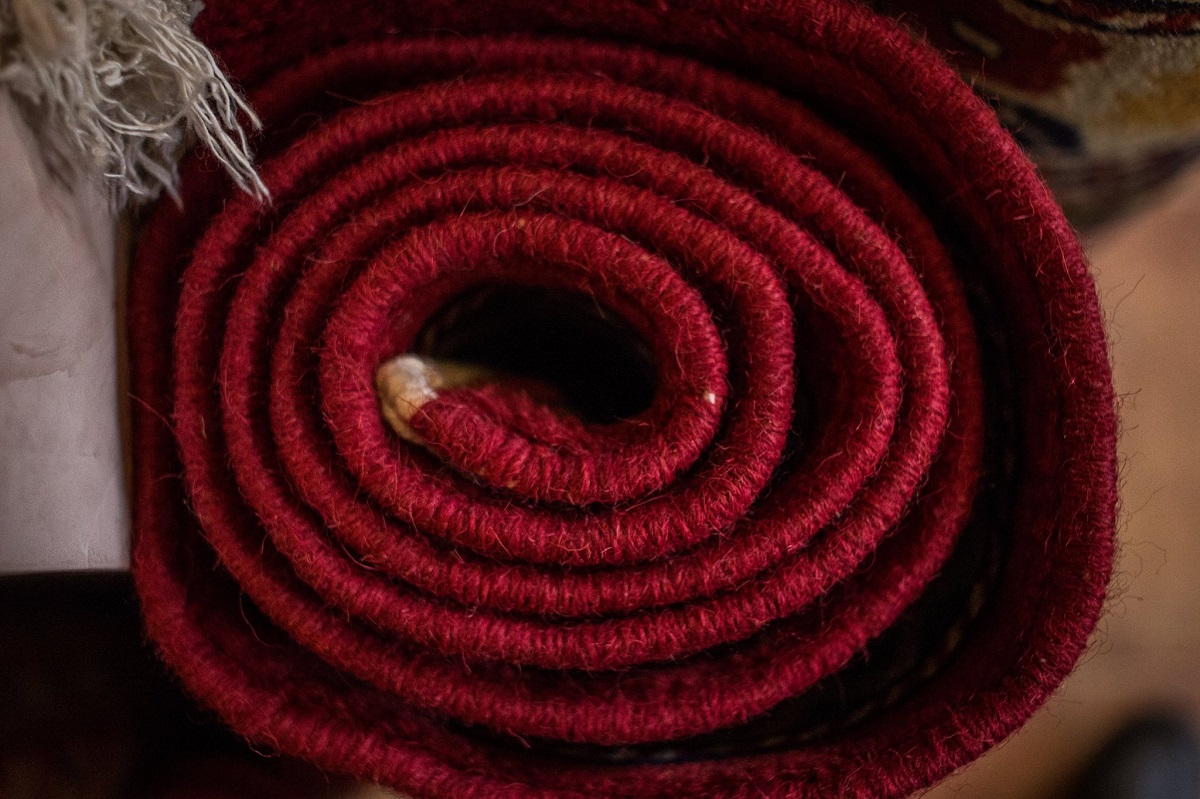
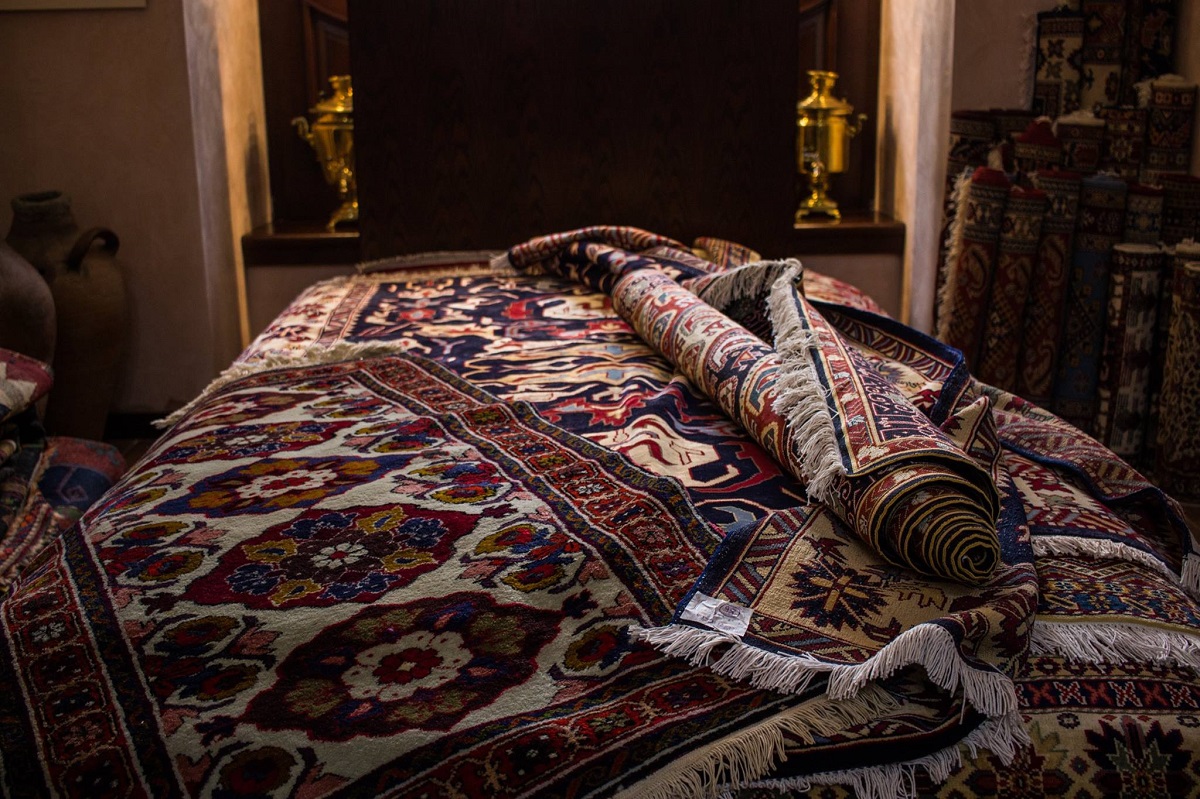
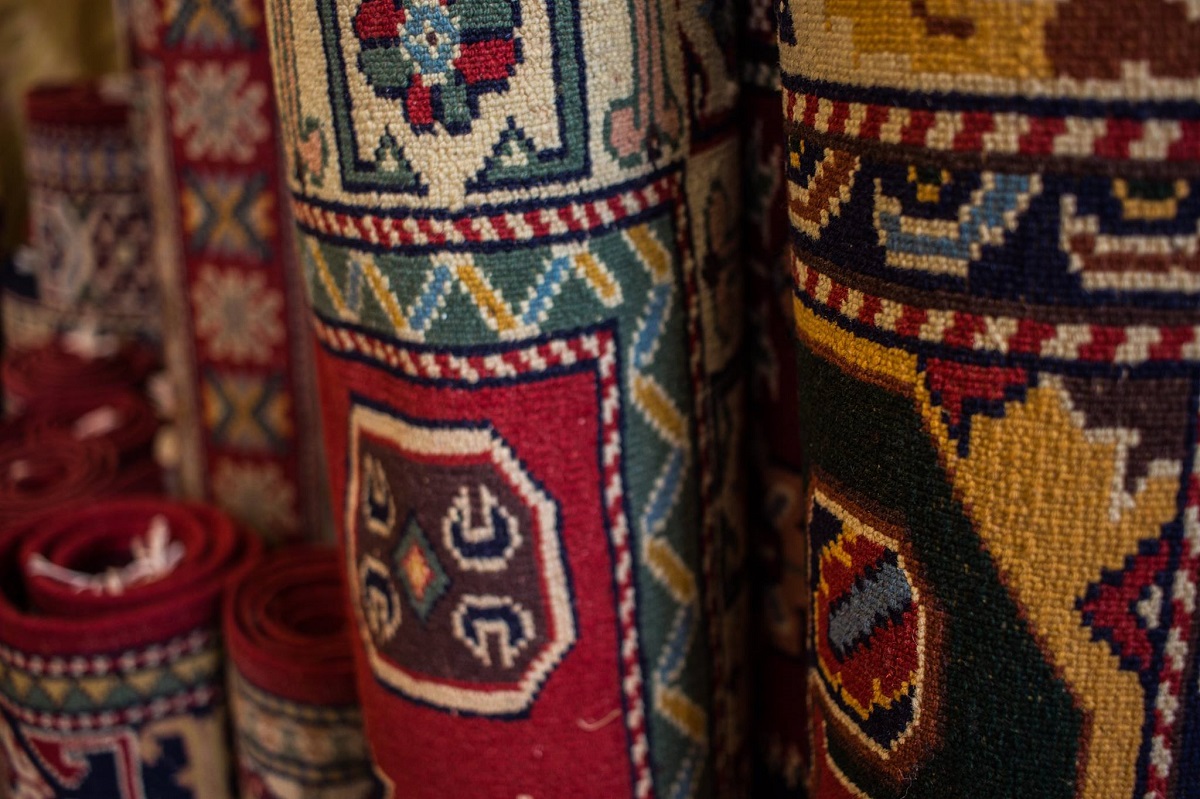
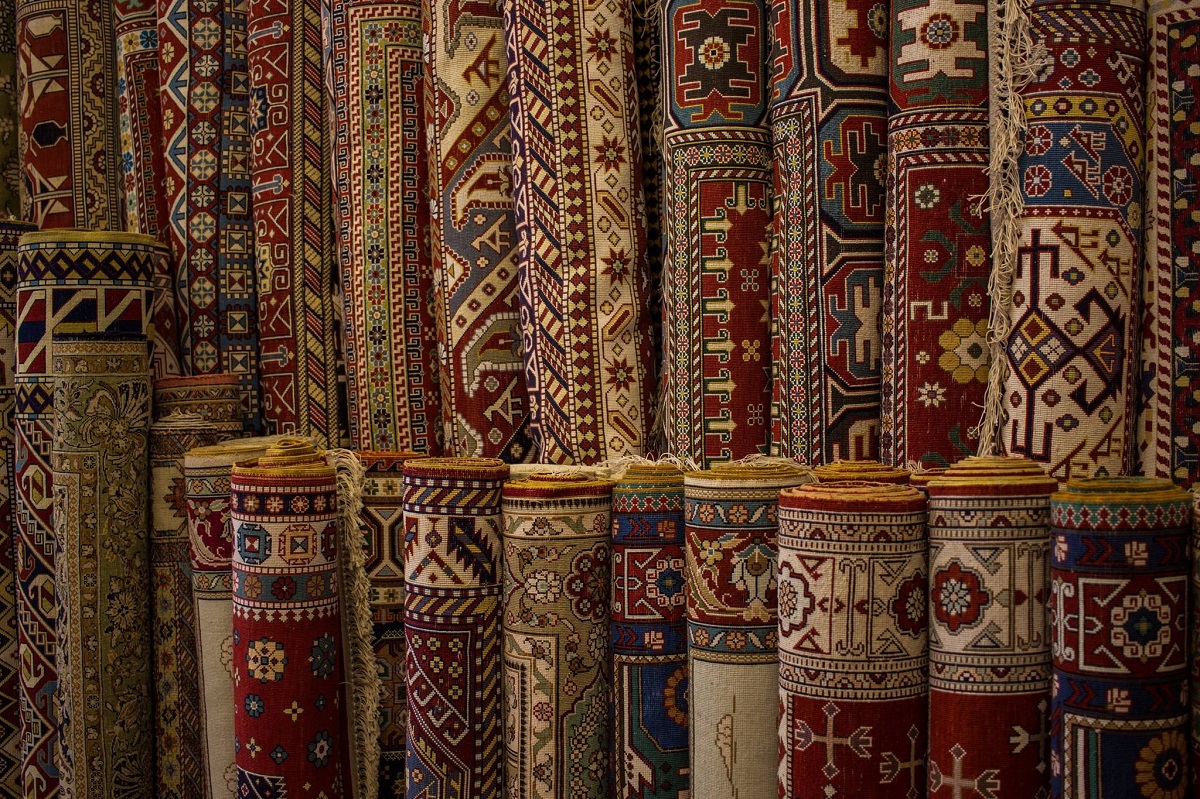
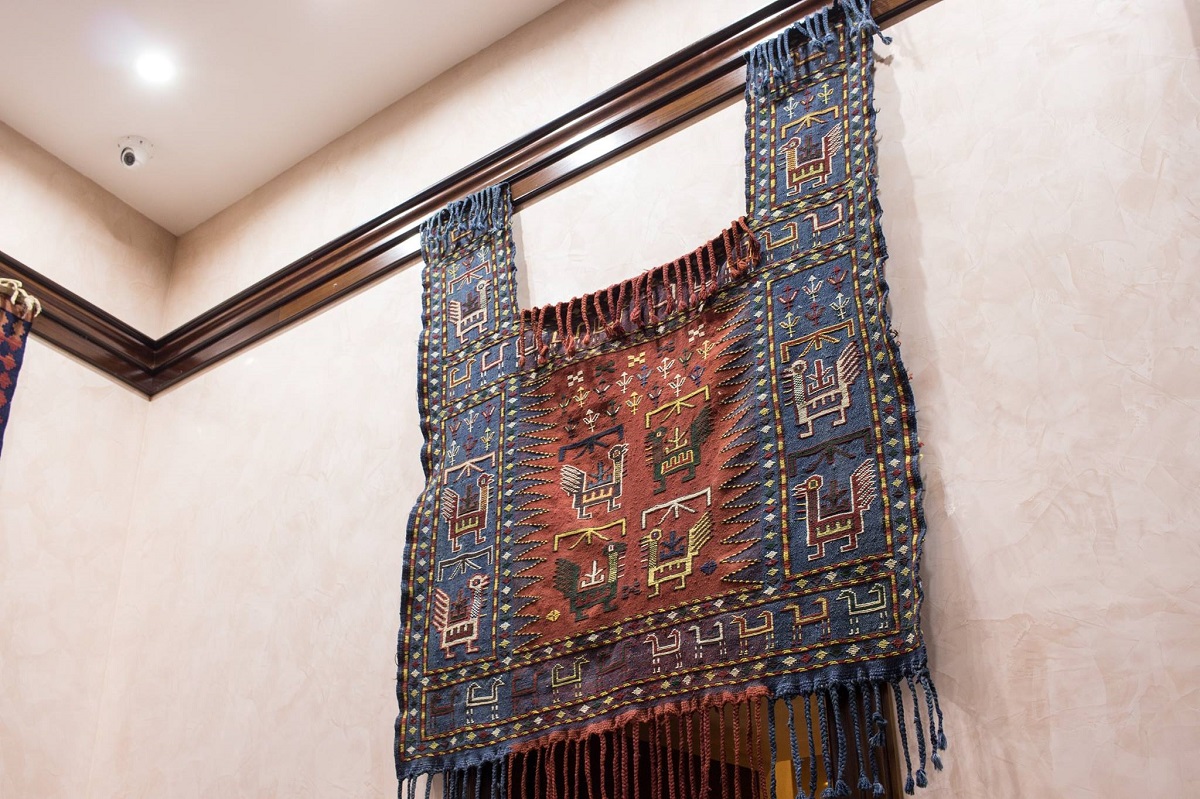
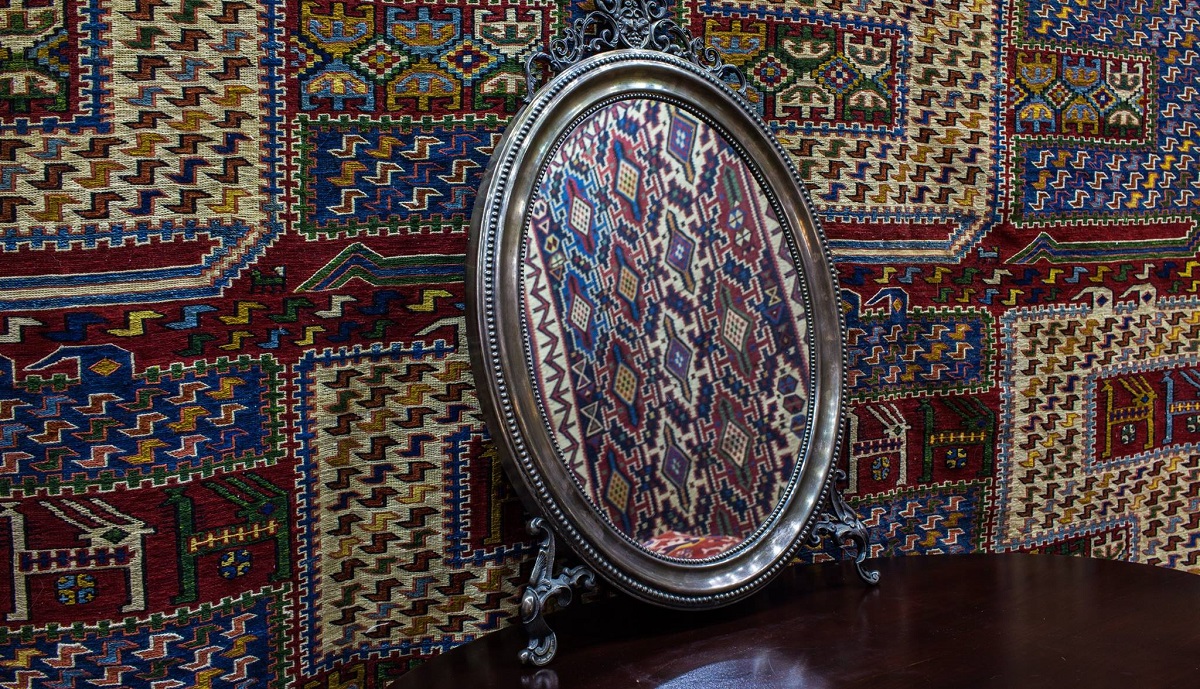
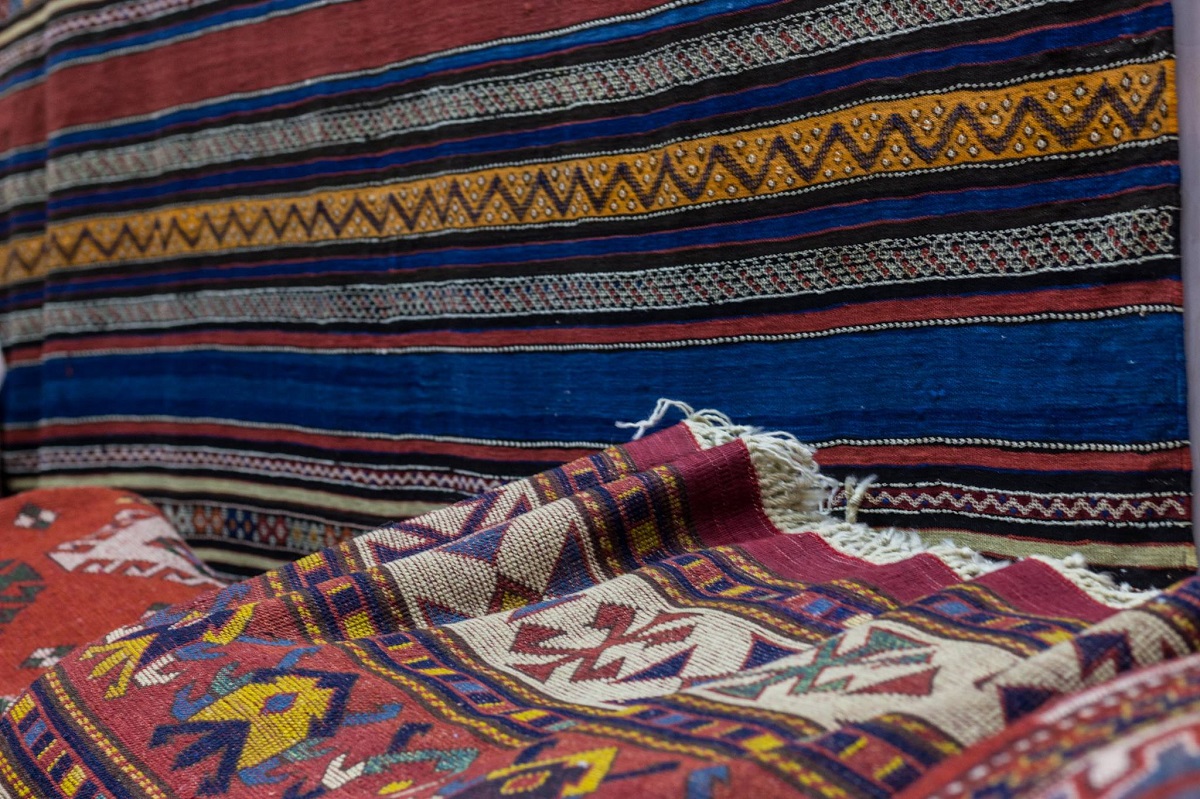


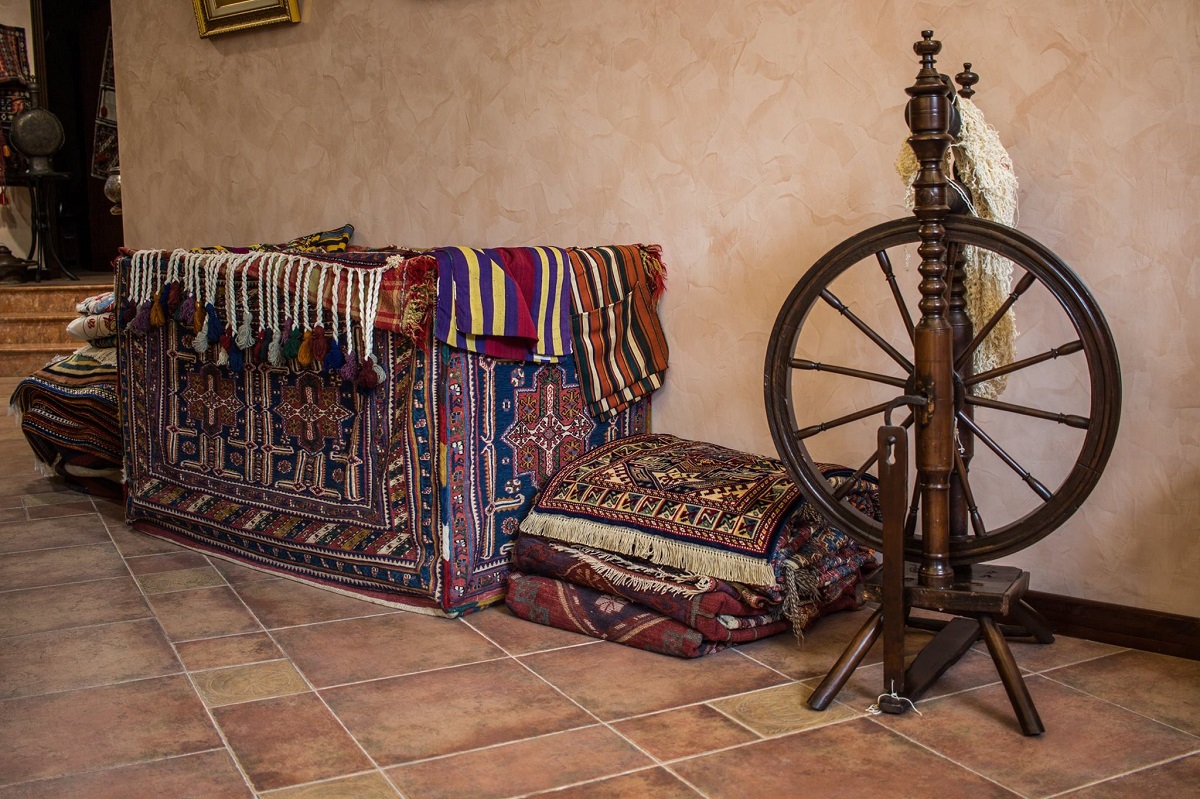
|
All of the above categories pertain to pile carpets, or “fluffy” carpets in other words. There are also lint-free, smooth ones, which are simpler in execution, and more practical in use. These carpets are not only used to cover floors or hung from walls, but blankets, purses, and bags for storing salt and bread can be made from them.
What you didn’t know about carpets: as told by art historian Makhnur Aliyev
- Carpets should never be sprinkled with mothballs, rolled up, and stored like a mummy. This will ruin them. Carpets get better when they’re used, touched, and rubbed, but you also shouldn’t abuse them.
- To consider carpets as part of Muslim culture is an incorrect assumption. They appeared long before monotheism, and you can often see stylized images of dragons, Zoroastrian and other symbols that have nothing to do with Islam, and even contradict it, in Azerbaijani carpets. The only exceptions are special carpets used for prayer.
- Azerbaijanis purchase antique and handmade carpets much more often than foreigners do. This is because it’s difficult for foreigners to take carpets out of the country with them; they need a certificate, and carpets over 50 years old can’t be transported at all.
- Handmade carpets aren’t just an expensive whim, but a good monetary investment, no worse than gold; over time, their value increases.
- Rules regarding carpet weaving were formed relatively recently. In the old days, weavers generally improvised, so each carpet could reflect their mood at a particular point in time, life events, and so forth.
Makhurna Aliyeva herself still laments a lost carpet:
“When I was still living with my parents, we had one carpet that was a bit shabby, but old-fashioned and very beautiful. Then I came home one day, and my grandmother told me that some buyers came, and she took two new carpets in exchange for the old one. I looked at these new carpets, and they were horrible, made with machine knitting… Turkish consumer goods. I was very upset, but to my grandmother, it seemed to be a profitable exchange.”
The “carpet walkway” for Barak Obama
Sanubar Nabieva weaves carpets to order. Galleries order traditional carpets to sell, large companies want ones with their logos, and students ask to have their theses “weaved” (there is a department of arts and crafts at the Azerbaijan State Art Academy).
Barak Obama and his family, as well as Dmitri Medvedev and other “neighborly” politicians are included among the imagery of the carpets she’s been asked to weave. In Azerbaijan, it’s customary to give carpets to the richest of VIPs with their own portrait woven into it.
Often carpets are ordered with ancient oriental miniatures, scenes from the works of the poet Nizami, and biblical motifs, such as that off Adam and Eve in the Garden of Eden (depicted decently and tastefully), or the prophet Moses with the tablets.
It would seem that the craft is in high demand, but a weaver is never fully satisfied with their work:
“I want to go to Turkey and teach. I’m waiting for an answer from them. Here, they don’t know how to appreciate the work of a carpet weaver. People come, they want to get a stylish carpet, and when you tell them the price, they start bargaining, saying it’s too expensive. This, by the way, is laborious manual work. And yes, the financial crisis has affected it. Far fewer orders have been received than before.”
Carpets as a remedy for depression
A tell-tale symbol of philistinism for modern Azerbaijan is a carpet on the wall. This decorative element was very popular in the 80s and 90s, but later it was hated just as fervently as it was loved before. This attitude isn’t shared by everyone though.
“I don’t understand why a carpet on the wall has become tacky. If it’s beautiful and suits the interior, then why not?!” says 21-year-old Aziza Mustafazade, one of the youngest carpet weaving teachers in Baku.
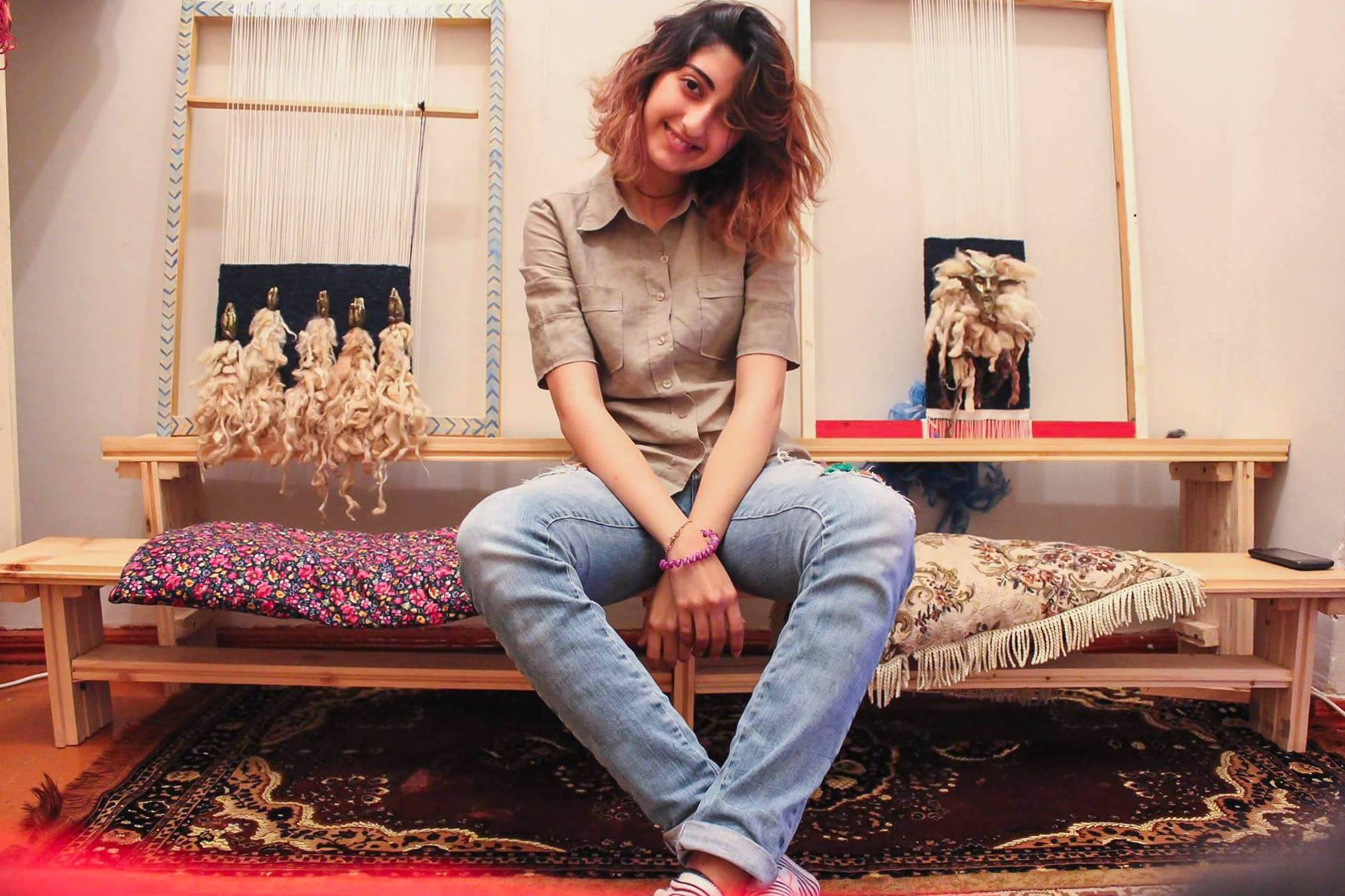
Before becoming her profession, carpet weaving helped her survive a transitional age:
“Other teenagers listened to rock to fight depression, I wove carpets, and it truly helped. Even now, it’s the best way for me to relax after work, though that probably seems strange, considering it’s what I do at work.”
Sanubar also said that carpet weaving calms her nerves, and that the sounds of the loom are especially helpful.
“In Baku these carpets have become souvenirs, and now in many villages they are just for the home. Many women know how to do it, not just masters,” the weaver told us. “In the summer, however, very few people are engaged in it, because there’s too much other work to be done in the gardens and fields. But, when it gets cold, they sit down at the loom. There, they basically weave large, practical carpets to lay on the floor.”


















